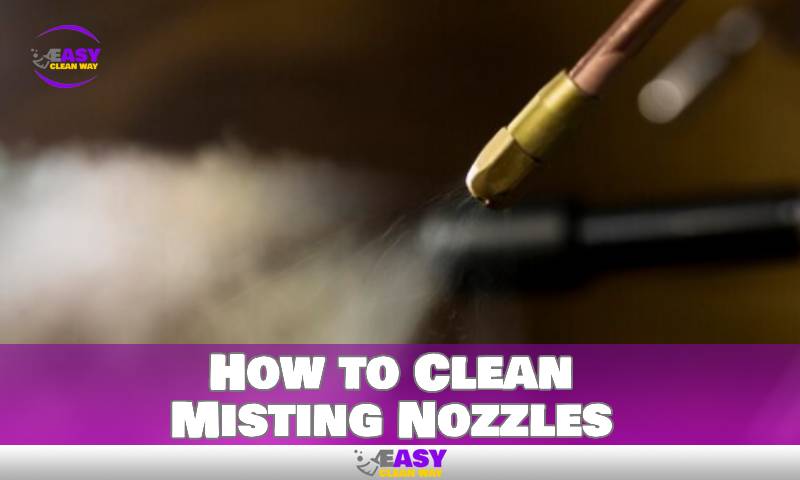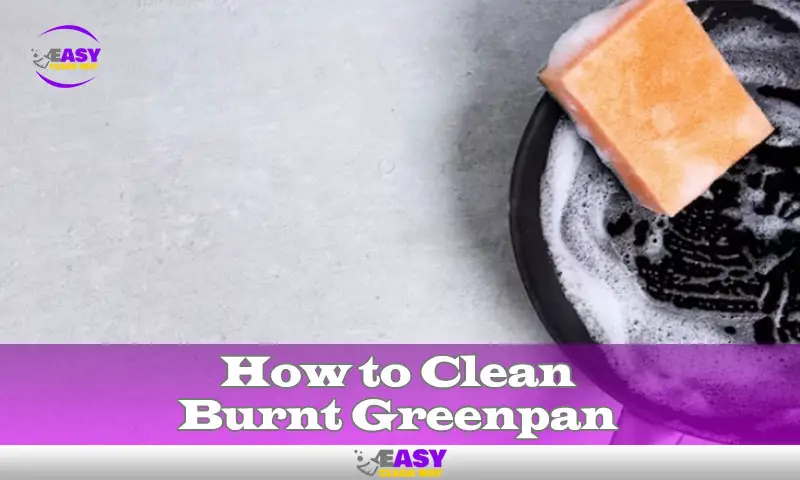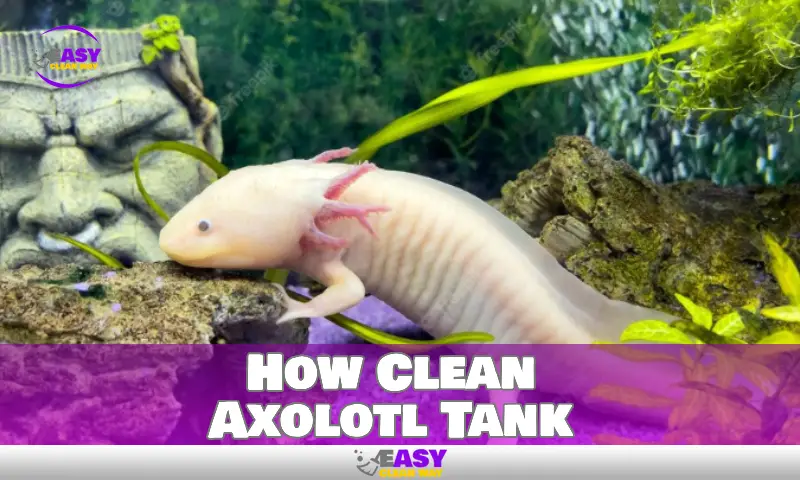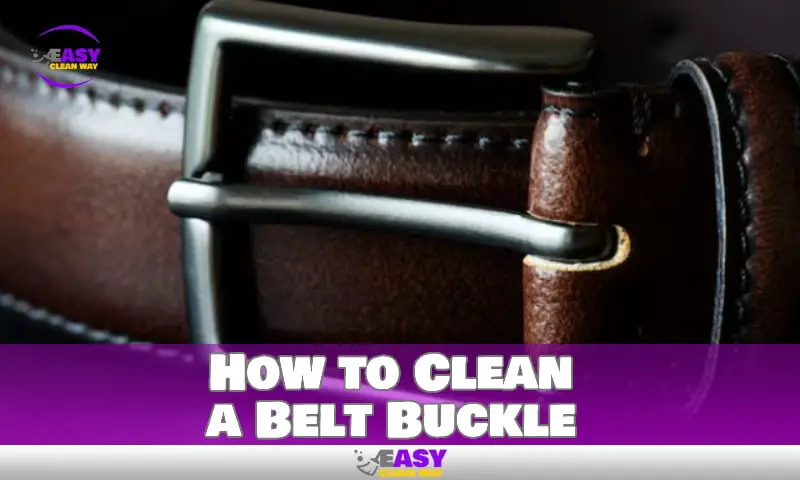To clean misting nozzles, first, remove them from the system. Then soak them in a solution of water and vinegar for 30 minutes, scrub them with a brush, and rinse thoroughly.
Additionally, blow compressed air through the nozzle to remove any remaining debris or buildup. Misting nozzles are a vital component of misting systems, used to create a fine spray of water for various purposes, such as outdoor cooling or irrigation.
Over time, these nozzles can become clogged or dirty, obstructing the flow of water and reducing their efficiency. Regular maintenance and cleaning are essential to ensure that misting nozzles continue to function effectively. Following a simple cleaning process can help prolong the lifespan of these nozzles and maintain their performance. In this article, we will guide you through the exact steps to clean misting nozzles, ensuring optimal functionality and clear spray patterns.
Understanding The Importance Of Clean Misting Nozzles
When it comes to maintaining efficient misting systems, clean misting nozzles play a crucial role. These tiny components are responsible for dispersing water into fine droplets, creating a cool and refreshing mist that enhances outdoor cooling systems. However, dirty or clogged nozzles can significantly impact the overall performance of the misting system.
Regular cleaning of these nozzles is essential to ensure optimal functionality. Let’s explore why clean misting nozzles are vital and how they contribute to the efficiency of outdoor cooling systems.
The Role Of Misting Nozzles In Enhancing Outdoor Cooling Systems:
Misting nozzles are the heart and soul of any misting system, and they perform several key functions to enhance outdoor cooling. Here’s what you need to know:
- Breaks down water: Misting nozzles break down water into tiny droplets, increasing the surface area and facilitating faster evaporation. This process creates a cooling effect in the surrounding area, making it ideal for outdoor spaces on hot summer days.
- Adjustable spray patterns: Nozzles come in various types, each with different spray patterns. Adjustable misting nozzles allow you to control the amount and direction of the mist, tailoring it to your specific cooling needs.
- Efficiency and water conservation: Clean misting nozzles ensure an efficient misting system that conserves water. By maintaining the nozzles in their optimal condition, you can get the most out of your cooling system while reducing water waste.
The Impact Of Dirty Or Clogged Nozzles On The Performance Of The Misting System:
Dirty or clogged misting nozzles can have detrimental effects on the overall performance of the misting system. Here are the key impacts to be aware of:
- Reduced cooling effectiveness: When misting nozzles are clogged with mineral deposits, dust, or other debris, the fine mist they produce becomes compromised. This can result in reduced cooling effectiveness, leaving you with a less refreshing outdoor environment.
- Uneven cooling distribution: Clogged nozzles can cause uneven distribution of mist, creating hot spots in certain areas and inadequate cooling in others. This inconsistency can make your outdoor space less enjoyable and comfortable.
- Increased energy consumption: Inefficient misting systems due to dirty nozzles may lead to increased energy consumption. The system has to work harder to achieve the desired cooling effect, resulting in higher energy bills.
- Potential damage to the system: Neglecting regular cleaning can result in long-term damage to the misting system. Mineral deposits and debris can accumulate, causing clogs that may require costly repairs or even replacement of the nozzles.
Why Regular Cleaning Is Essential For Maintaining Efficient Misting Nozzles:
To maintain the efficiency of your misting system and ensure a comfortable outdoor cooling experience, regular cleaning of the misting nozzles is essential. Consider the following reasons:
- Prevents clogging: Regular cleaning prevents mineral deposits, debris, and other particles from building up and clogging the nozzles. By removing these blockages, you ensure a steady flow of water and consistently fine mist.
- Ensures optimal spray patterns: Cleaning the nozzles allows you to maintain the optimal spray patterns necessary for effective cooling. It ensures that water is dispersed evenly and precisely as intended, avoiding any interruptions in the misting process.
- Extends the lifespan: By keeping the nozzles clean, you extend their lifespan. Regular maintenance minimizes wear and tear caused by clogs, reducing the risk of nozzle malfunction and the need for premature replacement.
- Improves overall system performance: Clean nozzles contribute to the optimal performance of the misting system. You’ll experience consistent cooling, energy efficiency, and peace of mind knowing that your system is working as intended.
Understanding the importance of clean misting nozzles is key to maintaining an efficient outdoor cooling system. By ensuring regular cleaning, you can enjoy the full benefits of a refreshing mist and prolong the lifespan of your misting nozzles. Remember, a little maintenance goes a long way in creating a cool and comfortable outdoor environment.
The Tools You’ll Need
Cleaning misting nozzles requires the right tools to effectively remove debris and ensure optimal functionality. Gather the necessary supplies before starting the cleaning process to make the job easier and more efficient.
Here are the key points to consider:
- Pliers: A pair of pliers will come in handy for removing and reinstalling misting nozzles. They provide a firm grip and make it easier to maneuver the nozzles.
- Toothbrush: An old toothbrush with soft bristles is perfect for scrubbing away dirt and grime from the misting nozzles. It helps reach those hard-to-reach areas and ensures thorough cleaning.
- Bucket of water: Fill a bucket with warm water to soak the nozzles before cleaning them. This will help loosen any debris and make it easier to remove dirt and clogs.
- Cleaning solution: Depending on the type of misting system you have, different cleaning solutions may be recommended. For brass nozzles, a mixture of equal parts vinegar and water does the trick. Stainless steel nozzles can be cleaned with a mild dish soap solution. It’s important to use the right cleaning solution to prevent damage to the nozzles.
- Soft cloth: Keep a soft cloth or rag handy to dry the nozzles after cleaning them. This will help prevent water spots and ensure the nozzles are ready for use.
- Safety glasses: When working with misting nozzles, it’s important to protect your eyes from any debris that may splash or fly out during the cleaning process. Safety glasses provide the necessary protection.
Remember, using the right tools for the job not only makes the cleaning process easier but also helps prolong the lifespan of your misting nozzles. Now that you have gathered the necessary supplies, let’s move on to understanding why using the right tools is crucial for cleaning misting nozzles effectively.
Step-By-Step Guide To Cleaning Misting Nozzles

Cleaning misting nozzles is an essential maintenance task to ensure that your misting system continues to function effectively. When left uncleaned, mineral deposits and debris can clog the nozzles, resulting in reduced misting and potentially damaging the system. To keep your misting nozzles in top-notch condition, follow this step-by-step guide to cleaning them properly.
Preparing The Misting System For Cleaning:
Before you begin cleaning the misting nozzles, it is important to prepare the misting system to ensure safety and effectiveness. Here’s what you need to do:
- Turn off the power: Start by shutting off the power to the misting system to avoid any accidents or malfunctions during the cleaning process.
- Disconnect water supply: Next, disconnect the water supply from the misting system. This prevents water from flowing through the system while you handle the nozzles.
- Gather necessary tools: Ensure you have all the tools you’ll need for cleaning, such as a small brush, toothpick, or needle, cleaning solution, and a clean cloth.
Removing The Misting Nozzles From The System:
To clean the misting nozzles effectively, it is crucial to remove them from the system. Here’s how you can do it:
- Locate the misting nozzles: Identify the location of the misting nozzles. They are typically found along the misting lines or at the end of the tubing.
- Unscrew the nozzles: Using your hands or a wrench, gently unscrew the nozzles from the misting lines or tubing. Take care not to damage the threads.
Disassembling The Nozzle For A Thorough Clean:
To remove any accumulated debris or mineral deposits, disassemble the misting nozzle. Follow these steps:
- Separate the nozzle components: Once the nozzle is removed, carefully disassemble it into its different parts. This may include the nozzle body, filter, and an O-ring.
- Inspect the components: Examine each component for any signs of clogging, mineral buildup, or damage. If necessary, replace worn-out or damaged parts.
- Clean the components: Use a small brush, toothpick, or needle to clean any debris or mineral deposits from the nozzle openings, filters, and other components. Ensure that you remove all obstructions thoroughly.
Using Appropriate Cleaning Techniques And Solutions:
To effectively clean misting nozzles, it is important to use the right cleaning techniques and solutions. Here’s what you should do:
- Soak in a cleaning solution: Prepare a cleaning solution by mixing water and a mild detergent or vinegar. Soak the disassembled nozzle components in the solution for about 15-30 minutes. This helps dissolve any remaining residue.
- Scrub gently: After soaking, use the brush or toothpick to gently scrub the components, paying special attention to the nozzle openings. This ensures the removal of any stubborn deposits.
- Rinse thoroughly: Once the components are clean, rinse them thoroughly with clean water to remove the cleaning solution and any loosened debris.
Reassembling The Nozzle And Ensuring Proper Installation:
After cleaning, it’s time to reassemble the nozzle and ensure it is properly installed in the misting system. Follow these steps:
- Dry the components: Use a clean cloth or towel to dry each component thoroughly before reassembly. This helps prevent moisture-related issues.
- Reassemble the nozzle: Fit the cleaned components back together, making sure the o-ring and filter are properly aligned and intact.
- Install the nozzle: Carefully screw the nozzle back into place on the misting lines or tubing, ensuring it is snug but not overtightened.
By following these step-by-step instructions, you can effectively clean your misting nozzles and maintain the optimal performance of your misting system. Remember to perform regular cleaning and maintenance to keep your misting system in tip-top shape for enjoyable outdoor cooling.
Troubleshooting Common Issues With Misting Nozzles
Identifying Signs Of Clogged Or Damaged Nozzles
- No mist or reduced mist output: If you notice a significant decrease in mist output or no mist at all, it could be a sign of clogged or damaged nozzles.
- Uneven spray pattern: If the misting system is producing an uneven spray pattern, with some nozzles spraying more or less than others, it may indicate clogged or damaged nozzles.
- Leakage around the nozzles: If you see water dripping or leaking around the misting nozzles when the system is in operation, it could be a sign of clogged or damaged nozzles.
Techniques For Unclogging Stubborn Debris From Nozzles
- Soaking in vinegar solution: Remove the clogged nozzles and soak them in a solution of equal parts vinegar and water for about an hour. This will help dissolve mineral deposits and unclog the nozzles.
- Using a nozzle cleaning tool: Use a specialized nozzle cleaning tool, which usually comes with a small brush or needle-like attachment, to carefully clean the nozzle openings and remove any debris or buildup.
- Blowing compressed air: If the clog is stubborn, you can try blowing compressed air through the nozzle openings to dislodge and remove any blockage. Ensure to use low-pressure air to avoid damaging the nozzles.
Fixing Leaks Or Other Problems With Misting Nozzles
- Tightening connections: Check all the connections between the misting system and the nozzles. If you find any loose connections, tighten them with a wrench or pliers to ensure a secure fit and prevent leaks.
- Replacing rubber gaskets: Inspect the rubber gaskets in the nozzle fittings. If they are worn or damaged, replace them with new ones to create a tight seal and prevent leaks.
- Repairing cracks or breaks: If you notice any cracks or breaks in the misting nozzles, it may be necessary to replace them. However, for minor cracks, you can try using a waterproof adhesive to seal them and prevent further leakage.
When To Replace Misting Nozzles And How To Choose The Right Replacements
- Signs of irreparable damage: If the misting nozzles are severely clogged, damaged beyond repair, or have extensive mineral buildup, it’s time to replace them.
- Choosing the right replacements: Consider the flow rate, spray pattern, and compatibility with your misting system when selecting new nozzles. Take note of the nozzle orifice size, as different sizes produce different spray patterns and mist densities.
- Material selection: Misting nozzles are available in various materials, such as stainless steel, brass, or plastic. Choose a material that best suits your specific needs in terms of durability, resistance to corrosion, and compatibility with the misting system.
Remember, regularly cleaning and maintaining your misting nozzles will help ensure optimal performance and extend their lifespan. By promptly addressing any issues and knowing when to replace them, you can enjoy the benefits of a well-functioning misting system.
Maintenance Tips For Clean And Efficient Misting Nozzles

Regular Maintenance Routines To Keep Misting Nozzles Working Optimally
Regular maintenance is essential to ensure that your misting nozzles continue to deliver efficient performance. Here are some key tips to keep in mind:
- Inspect the nozzles: Regularly check your misting nozzles for any signs of clogs, mineral buildup, or damage. This will help you identify potential issues early on and prevent any further damage to your system.
- Clean the nozzles: Cleaning your misting nozzles regularly is crucial to maintaining their optimal functionality. Use a soft brush or toothbrush to gently scrub away any deposits or debris that may have accumulated on the nozzle openings.
- Soak in vinegar solution: To remove stubborn clogs or mineral buildup, soak the nozzles in a vinegar solution. Simply mix equal parts of vinegar and water, and let the nozzles soak for about 30 minutes. Afterward, rinse thoroughly with clean water.
- Check the filters: Many misting systems have filters to prevent debris from entering the nozzles. Check these filters regularly to ensure they are clean and free from blockages. If necessary, clean or replace the filters according to the manufacturer’s recommendations.
- Inspect the system: Besides the nozzles, it’s crucial to inspect the entire misting system for any leaks, loose connections, or other potential issues. Addressing these problems promptly can help maintain the efficiency and longevity of your misting system.
Best Practices For Preventing Clogs And Buildup In Misting Nozzles
Clogs and mineral buildup in misting nozzles can significantly impact their performance. Here are some best practices to prevent such issues:
- Use filtered or purified water: The quality of the water you use in your misting system plays a significant role in preventing clogs and buildup. Using filtered or purified water reduces the mineral content and minimizes the chances of deposits forming in the nozzles.
- Flush the system regularly: Flushing your misting system regularly helps remove any debris or sediment that may have accumulated in the lines. This can help prevent clogs from forming and maintain the overall efficiency of the system.
- Avoid using harsh chemicals: While it may be tempting to use strong chemicals to clean your misting nozzles, it’s best to avoid them. Harsh chemicals can damage the nozzles and potentially harm the surrounding environment. Stick to mild cleaning solutions like vinegar or soapy water.
- Install anti-drip valves: Anti-drip valves can help prevent clogs by reducing the pressure on the nozzles when the system is not in use. This helps prevent water from sitting stagnant in the lines, which can lead to mineral buildup over time.
Cleaning Frequency Recommendations For Different Environments And Usage Levels
The cleaning frequency of misting nozzles may vary depending on the environment and how frequently the system is used. Here are some general recommendations:
- Light use in clean environments: If your misting system is used infrequently or operates in a clean environment with minimal dust or debris, cleaning the nozzles every 3 to 6 months is typically sufficient.
- Moderate use in average environments: For misting systems that are used more frequently or operate in average environments with moderate dust or debris, cleaning the nozzles every 1 to 3 months is recommended.
- Heavy use or harsh environments: If your misting system is used heavily or operates in environments with high levels of dust, debris, or mineral-heavy water, more frequent cleaning may be necessary. In such cases, cleaning the nozzles every 2 to 4 weeks can help maintain optimal performance.
It’s important to note that these are general recommendations, and you should always refer to the manufacturer’s guidelines for your specific misting system.
Protecting Misting Nozzles During The Off-Season Or Periods Of Non-Use
To ensure the longevity and proper functioning of your misting nozzles during periods of non-use or the off-season, follow these protective measures:
- Remove and store the nozzles: Before the off-season or prolonged periods of non-use, it’s advisable to remove the misting nozzles from the system. This prevents the accumulation of dust, debris, or moisture that can lead to clogs or damage.
- Clean and dry the nozzles: Once removed, clean the nozzles thoroughly using the recommended cleaning methods. Ensure they are completely dry before storing them. Any moisture left on the nozzles can promote the growth of mold or bacteria.
- Store in a cool, dry place: Find a cool and dry location to store the misting nozzles. This helps prevent exposure to extreme temperatures or humidity, which can affect their overall condition.
- Replace worn-out parts: If you notice any signs of wear or damage on the nozzles or other components of your misting system during the inspection, replace them before storing the equipment. This ensures you start the next season with fully functional parts.
By following these maintenance tips and best practices, you can keep your misting nozzles clean, efficient, and in optimal working condition for years to come.
FAQs
How Often Should Misting Nozzles Be Cleaned?
Misting nozzles should be cleaned at least once a year to prevent clogs and maintain proper functionality.
What Supplies Do I Need To Clean Misting Nozzles?
To clean misting nozzles, you will need a soft brush, a vinegar-water solution, and a small container for soaking.
Can I Remove Misting Nozzles Without Professional Help?
Yes, you can remove misting nozzles yourself by gently twisting them counterclockwise until they release from the system.
What Is The Best Method To Clean Misting Nozzles?
The best method to clean misting nozzles is by soaking them in a vinegar-water solution, then gently brushing away any residue.
Conclusion
To ensure your misting system is functioning at its best, it is vital to regularly clean your misting nozzles. Neglecting this maintenance task can result in clogged nozzles and inefficient cooling performance. By following the steps outlined in this article, you can easily clean your misting nozzles and extend the lifespan of your misting system.
Start by removing the nozzles and soaking them in a vinegar solution to dissolve any mineral deposits. Scrub the nozzles gently with a soft brush to remove any remaining debris. After rinsing them thoroughly, reinstall the nozzles and test the misting system to ensure proper functioning.
Remember to clean your misting nozzles at least once every season or more frequently if you notice reduced mist output. With regular maintenance, you can enjoy a refreshing and efficient misting system all year.
Hey there! I’m Alton Smith, your Clean Expert blogger. I’m on a quest to help you conquer chaos and embrace the joys of a tidy life.





